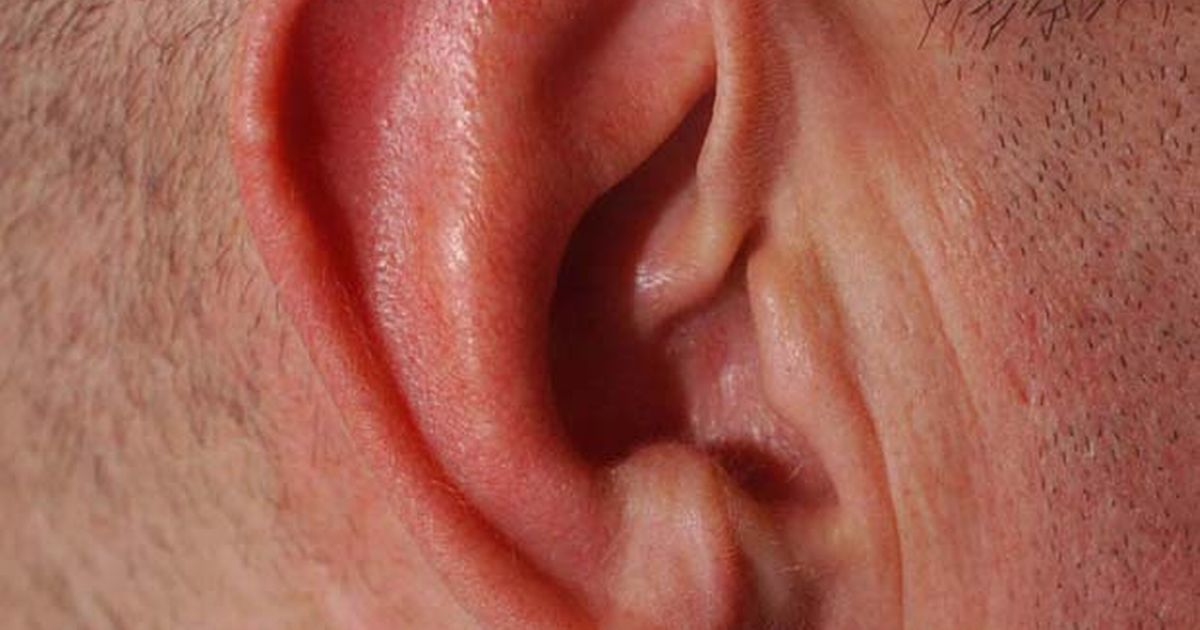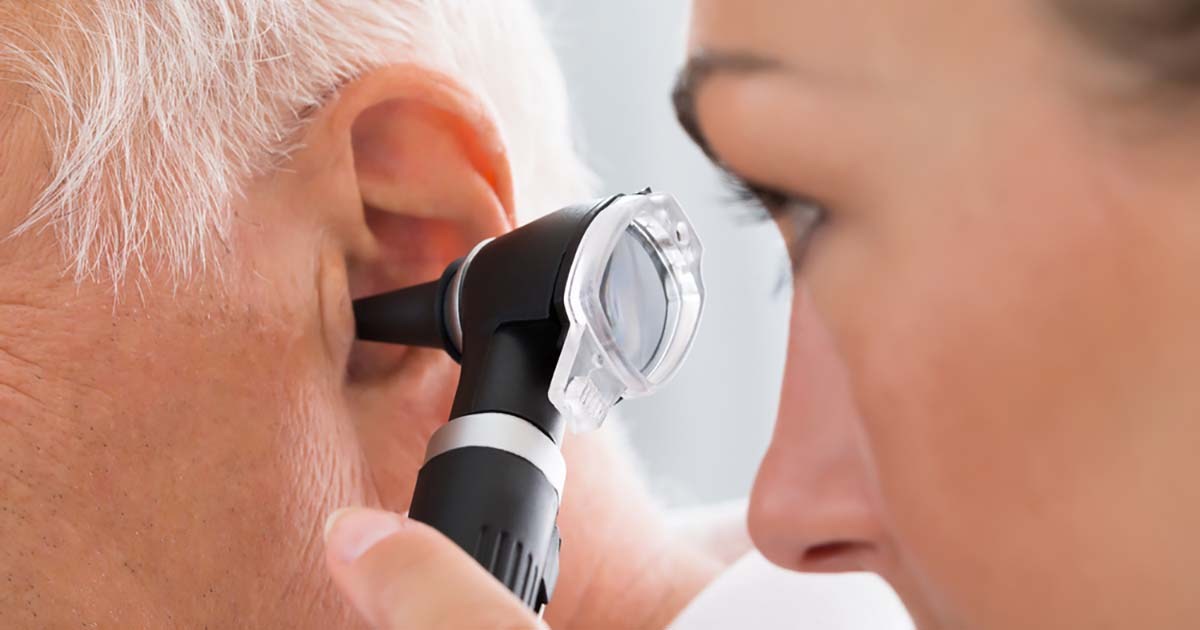Symptoms Of Swimmer's Ear
While it is certainly possible to get swimmer's ear from swimming in a pool or the ocean, don't let the name fool you. Swimmer's ear, aka otitis externa, is caused by bacteria or fungi and can happen at any time. That said, it most commonly occurs in children who swim because of the buildup of water in their ears. Moisture and other irritants, like foreign objects, chemicals, skin conditions, dry skin, and rough cleaning practices, create a hospitable environment for the bacteria or fungi to live in the ear canal and can lead to infection. This infection typically affects the ear in three stages: mild, moderate, and advanced.
While swimmer's ear is not contagious and is usually easily treated, it can cause some painful and irritating symptoms. Get to know these irritating symptoms of swimmer's ear now.
Redness And Itching In The Ear

During the first stages of swimmer's ear, patients may experience some mild itching. As a matter of fact, this may be the only sign experienced for a few days, and it can occur long before patients even realize they have an infection. The ear canal may also be pink or slightly red. As the infection progresses, the itching will become more severe and may spread beyond the ear canal. The ear canal will also become redder. If the infection progresses to the advanced stage, the redness may extend to the outer part of the ear. It may even be accompanied by some swelling of the outer ear and surrounding lymph nodes. If an individual is experiencing redness and itching in the ear, they should stay alert for other warning signs of an infection.
Speaking of other warning signs, keep reading to learn about the next symptom of swimmer's ear.
Drainage Of Clear Fluid

A more definitive sign something is wrong beyond redness and itching in the ear is the drainage of clear fluid. During the earliest stages of the infection, patients may not yet notice a discharge. Once they do, the fluid will most likely be clear and odorless. During the more moderate stage, patients may see even more drainage of clear fluid or even pus emerging from the ear canal. The fluid may become yellow, green, or a combination of the two colors, and it may also develop a putrid smell. Patients experiencing this symptom must see a doctor immediately before the infection spreads and causes other complications.
Keep reading for more information on symptoms of swimmer's ear.
Muffled Hearing

While not all cases of swimmer's ear will impact an individual's ability to hear sound, some will, especially during the moderate to advanced stages. Initially, patients may have some slightly muffled hearing, but as the infection becomes worse, they may find their hearing decreases until they can't hear anything out of the infected ear. Unfortunately, when left untreated, swimmer's ear can cause permanent damage to the ear, including decreased hearing or hearing loss. However, if patients treat it soon enough, the muffled hearing should reverse itself, and they'll usually find their ears go back to normal. Be sure to let a doctor know if you are experiencing this symptom.
It's time to move onto the next symptom of swimmer's ear. Keep reading now.
Fever And Pain

Fever and pain may occur together when individuals have swimmer's ear, or they may have one without the other. Initially, patients may experience some slight discomfort, but as the infection progresses, this can turn into severe pain. If the pain radiates beyond the ear to the face, neck, skull, or the area behind the ear, this can be a sign that infection has spread, and it could lead to hospitalization and a need to receive treatment through an IV. Fever is also a sign the infection has advanced from the early stages. Those who experience fever and pain, especially pain outside of the ear, may need to seek emergency treatment.
Learn more about the symptoms of swimmer's ear now.
Feeling Of Fullness In The Ear

Beyond pain, affected individuals may have a feeling of fullness in the ear. This can be very uncomfortable, and patients may be tempted to pull on the outer ear or stick foreign objects, like cotton swabs, into the ear canal. Unfortunately, all of this can make the infection worse. This feeling of fullness in the ear may stem from a buildup of fluid, swelling in the ear canal, or a buildup of foreign debris, like wax and dirt. As swimmer's ear progresses, the ear canal may eventually become completely blocked. This uncomfortable feeling may lead to trouble sleeping, and it can even interfere with balance as you walk and move about. However, it should go away once swimmer's ear is treated.
Read more about the major indications of swimmer's ear now.
Discharge Of Pus

In the early stages of swimmer's ear, patients may notice a discharge of clear fluid from the ear. As the condition progresses, there may be an increase in discharge. A discharge of pus indicates an advanced infection, and patients experiencing this symptom should consult a doctor as soon as possible. To evaluate the discharge from the ear, the doctor may need to take a swab to identify the cause of the infection. They may also suction out the ear canal, which will remove some of the discharge and help make treatment easier. In cases of severe swimmer's ear including the discharge of pus, patients typically require a combination of treatments. For infections caused by a fungus, doctors will prescribe antifungal treatments, and antibiotics are necessary for the treatment of bacterial infections. Steroids may be prescribed to reduce inflammation. Some of these medications are taken orally, and others are given as ear drops. An acidic solution applied to the outer ear may be useful in restoring the proper balance of bacteria in the ear. Patients should monitor the discharge from the ear and inform their doctor if it is not improving with treatment.
Uncover more information about the warning signs of swimmer's ear now.
Swollen Lymph Nodes

Swollen lymph nodes frequently occur in severe cases of swimmer's ear. The lymph nodes in the neck are most commonly affected, and patients may notice that these lymph nodes become tender to the touch. At times, the pain may radiate to the side of the patient's head and to their face, and some individuals might develop a fever. To properly assess swollen lymph nodes, the physician will start by gently feeling the nodes in the neck to check for swelling and pain. They may also need to feel the lymph nodes in other areas of the body, and blood tests may be recommended in some cases.
Swollen lymph nodes will typically return to their normal size once swimmer's ear has been successfully treated. Patients recovering from swimmer's ear should check their lymph nodes at home and let their doctor know if swelling or pain has gotten worse. Doctors may choose to prescribe prescription-strength pain relievers for patients with this advanced stage of swimmer's ear, and these medications may help to reduce some of the pain associated with swollen lymph nodes.
Read more about the serious indicators of swimmer's ear now.
Complete Ear Canal Blockage

A complete ear canal blockage is a sign of advanced swimmer's ear, and it may cause patients to have decreased or muffled hearing. Patients who have an ear canal that is completely blocked typically also have swelling and redness in the outer ear, and they may need to be treated by an ear, nose, and throat specialist. The specialist will examine the ear to check whether the infection is confined to the outer ear or if it has spread to the middle ear.
If the infection has advanced to the middle ear, the patient will need different treatments than those used for outer ear infections such as swimmer's ear. Since a complete blockage makes it impossible for ear drops to reach the infected parts of the ear canal, the doctor may need to insert a device called a wick. This device is normally made of gauze or cotton, and it is inserted at the doctor's office. The wick helps increase fluid drainage from the ear, and it also allows medicated ear drops to reach the infected areas more easily. Patients who have had an ear wick inserted may need to have follow-up appointments with their specialist, and they will be advised as to how long the ear wick should remain in place. Patients should take special care to keep their ear dry while using the wick, and it may need to be replaced if it gets wet.
Learn more about swimmer's ear symptoms now.
Painful Chewing

Painful chewing may occur with even mild cases of swimmer's ear, and it can make it difficult to eat normally and obtain adequate nutrition. Patients experiencing painful chewing may wish to eat soft foods such as pudding, yogurt, or mashed potatoes. To ensure sufficient calorie and nutrient intake, it can be helpful to make smoothies with fresh fruit, vegetables, and yogurt, and some patients might want to use shakes designed for meal replacement as well. Generally, chewing becomes less painful once the ear infection is treated. Patients should always mention painful chewing to their medical team while being evaluated for swimmer's ear; physicians can provide advice on appropriate calorie intake for each patient and ways to reach these calorie goals on a soft food or liquid diet.
